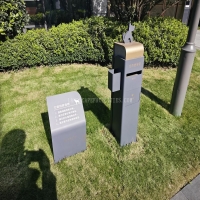Welcome to the website for landscape facilities products and knowledge.
How does the table’s design account for acoustic performance in noisy environments?
In today's bustling work environments, acoustic performance has become a critical consideration in furniture design, particularly for tables that serve as central gathering points. Modern table designs strategically incorporate multiple noise-combating elements that address both airborne and impact sounds. The foundation begins with specialized sound-absorbing materials integrated directly into the table's construction. High-density acoustic foam, mineral wool, and recycled textile fibers are layered within the table structure, particularly beneath the surface and within leg components where sound vibrations tend to resonate.
The table surface itself plays a dual role in acoustic management. Rather than traditional hard materials like glass or polished wood that reflect sound waves, designers now utilize engineered wood with acoustic cores, composite materials with sound-dampening properties, and specialized edge banding that prevents sound leakage. Some advanced designs feature perforated tabletops with hidden absorption layers that allow sound waves to penetrate and get trapped within the material matrix. The geometry of the table also contributes significantly to noise reduction, with curved edges and rounded corners that diffuse sound waves rather than creating sharp reflection points.
Leg and frame construction has evolved beyond mere structural support to become active participants in acoustic control. Hollow steel legs are often filled with sound-absorbing materials, while specially designed rubber isolators between the frame and table surface prevent vibration transmission. For larger conference tables, segmented design approaches incorporate baffles and dividers that break up sound paths across the table surface. Integrated power and data management systems also contribute by reducing cable clutter that typically reflects and amplifies sound waves.
The most innovative designs take a holistic approach, considering not just the table itself but its interaction with the surrounding environment. Some manufacturers offer integrated acoustic screens that attach directly to the table frame, creating localized quiet zones without the need for additional furniture. Advanced testing methods, including reverberation chamber measurements and impedance tube analysis, ensure these designs meet specific noise reduction coefficients (NRC) ranging from 0.6 to 0.95, meaning they absorb 60-95% of incident sound that would otherwise reflect into the space.
Material selection extends beyond conventional options to include sustainable sound-absorbing alternatives like organic cotton, wool felt, and recycled plastic composites that provide both environmental benefits and superior acoustic performance. The thickness and density of these materials are carefully calibrated to target specific frequency ranges, with thicker absorbers handling low-frequency hums from HVAC systems and thinner layers addressing higher-frequency speech sounds. This multi-layered, scientifically-grounded approach transforms the humble table from a passive piece of furniture into an active acoustic tool that significantly contributes to creating quieter, more productive environments.
Related search:

Recommendation
Outdoor cat and dog feces trash can; Community pet trash can; Metal multi-color design